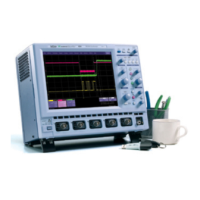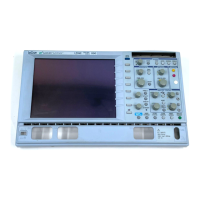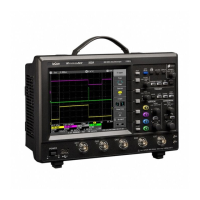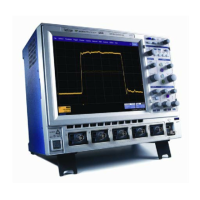X-Stream Operator’s Manual
WM-OM-E Rev I 231
bandwidth of the filter associated with the FFT calculation. This is best employed for characterizing
broadband signals such as noise.
Memory for FFT
The amount of acquisition memory available will determine the maximum range (Nyquist
frequency) over which signal components can be observed. Consider the problem of determining
the length of the observation window and the size of the acquisition buffer if a Nyquist rate of 500
MHz and a resolution of 10 kHz are required. To obtain a resolution of 10 kHz, the acquisition time
must be at least:
T = 1/Delta f = 1/10 kHz = 100 ms
For a digital oscilloscope with a memory of 100 kB, the highest frequency that can be analyzed is:
Delta f x N/2 = 10 kHz x 100 kB/2 = 500 MHz
FFT Pitfalls to Avoid
Take care to ensure that signals are correctly acquired: improper waveform positioning within the
observation window produces a distorted spectrum. The most common distortions can be traced to
insufficient sampling, edge discontinuities, windowing or the "picket fence" effect.
Because the FFT acts like a bank of band-pass filters centered at multiples of the frequency
resolution, components that are not exact multiples of that frequency will fall within two consecutive
filters. This results in an attenuation of the true amplitude of these components.
Picket Fence and Scallop
The highest point in the spectrum can be 3.92 dB lower when the source frequency is halfway
between two discrete frequencies. This variation in spectrum magnitude is the picket fence effect.
The corresponding attenuation loss is referred to as scallop loss. LeCroy scopes automatically
correct for the scallop effect, ensuring that the magnitude of the spectra lines correspond to their
true values in the time domain.
If a signal contains a frequency component above Nyquist, the spectrum will be aliased, meaning
that the frequencies will be folded back and spurious. Spotting aliased frequencies is often difficult,
as the aliases may ride on top of real harmonics. A simple way of checking is to modify the sample
rate and observe whether the frequency distribution changes.
Leakage
FFT assumes that the signal contained within the time grid is replicated endlessly outside the
observation window. Therefore if the signal contains discontinuities at its edges,
pseudo-frequencies will appear in the spectral domain, distorting the real spectrum. When the start
and end phase of the signal differ, the signal frequency falls within two frequency cells, broadening
the spectrum.
The broadening of the base, stretching out in many neighboring bins, is termed leakage. Cures for
this are to ensure that an integral number of periods is contained within the display grid or that no
discontinuities appear at the edges. Another is to use a window function to smooth the edges of the
signal.
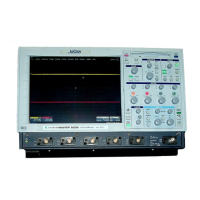
